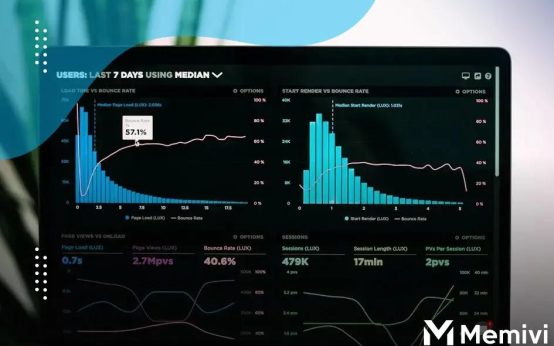Using advanced algorithms, these automated platforms offer tailored investment advice and portfolio management, making investing accessible and efficient for everyone, even beginners. Dive into this post as we explore what Robo-Advisors are, the benefits they offer, how they function, and what the future holds for this innovative investing tool. Whether you’re a seasoned investor or just starting, understanding Robo-Advisors can significantly impact your financial strategy.
What Are Robo-Advisors?
A robo-advisor is a digital platform that provides automated, algorithm-driven financial planning services with minimal human intervention. Typically, a robo-advisor collects information from clients about their financial situation and goals through an online survey, and then uses the data to offer advice and/or automatically invest client assets.
How They Operate
Robo-advisors utilize software algorithms to manage a client’s investment portfolio based on a variety of factors, including the client’s risk tolerance, financial goals, and investment timeline. They often use strategies like index investing, tax-loss harvesting, and rebalancing to optimize returns.
Most robo-advisors have user-friendly mobile apps and web interfaces, allowing clients to easily track their investments, review their financial health, and make basic adjustments to their strategies.
Cost-Efficiency is a major appeal. These platforms often charge lower fees than traditional human financial advisors, making them attractive to investors who prefer a hands-off investment approach. Furthermore, many require low or no initial deposits, making investing accessible to anyone.
The Benefits of Using Robo-Advisors

Robo-advisors have revolutionized the way individuals approach investing by providing easy, automated financial advice. Accessibility is one major advantage, as they allow anyone with a smartphone or computer to access personalized investment strategies. This technology brings a previously complex service into the hands of everyday people. With low or sometimes zero advisory fees, robo-advisors make it affordable for everyone to start investing.
Another benefit of using robo-advisors is their ability to provide diversification. They typically use algorithms to allocate your assets across a wide range of investments, reducing the risk associated with putting all your money in one place. This automated diversity ensures that your portfolio can withstand market fluctuations better.
Efficiency
When it comes to efficiency, robo-advisors excel by operating 24/7 without the need for traditional appointments or banking hours. This on-demand service helps you manage your portfolio whenever you want, giving you the freedom to make decisions at your convenience.
Robo-advisors are also advantageous in their use of technology to monitor and rebalance your investments automatically. This continuous oversight ensures that your investment strategy stays aligned with your goals, adapting to market changes seamlessly.
In summary, these tools offer a blend of cost efficiency, accessibility, and advanced portfolio management, making them an attractive option for modern investors.
How Robo-Advisors Work
Robo-Advisors use sophisticated algorithms to manage your investments. They assess your financial situation through a series of questions about your income, risk appetite, and investment goals. Based on your answers, these digital platforms create a diversified portfolio tailored to your needs.
The technology behind robo-advisors continuously monitors your investments. It automatically rebalances your portfolio to maintain the right mix of assets. This ensures that your investment strategy remains in line with your financial goals, even as market conditions change.
Moreover, robo-advisors can implement tax-loss harvesting. They sell underperforming investments at a loss to offset gains from better-performing assets, potentially reducing your tax liability.
Many robo-advisors offer regular updates and performance reports. This allows you to track how your investments are doing. Some even provide robust tools and educational resources to help you understand market trends and investment strategies better.
Despite their automated nature, robo-advisors may also offer access to human advisors for more personalized investment advice. This combination of technology and personal touch can be appealing to many investors, providing both efficiency and reassurance.
Future of Robo-Advisors in Investing

The future of robo-advisors in investing is evolving rapidly with advancements in technology. These digital platforms are set to transform the financial advisory landscape by becoming more sophisticated and personalized. As AI and machine learning progress, robo-advisors will be better at analyzing large datasets, providing tailored investment strategies to individuals based on their financial goals and risk tolerance.
Integration with new technologies like blockchain and biometrics could enhance security and transparency, making the investment process smoother and more reliable. Additionally, robo-advisors are expected to offer more comprehensive services, potentially integrating financial planning tools and tax optimization services.
The competition amongst robo-advisors will drive innovation, leading to better user experiences and more competitive pricing strategies. Investors might see robo-advisors offering more niche services to cater to specific interests or demographics, allowing users to gain insights and control over niche market areas that were previously unavailable.
Moreover, with the increasing role of environmental, social, and governance (ESG) factors in investing, robo-advisors will likely incorporate these elements into their algorithms, providing sustainable investment options that align with investor values. As the financial industry embraces digital transformation, the future of robo-advisors looks promising, providing investors with smarter, faster, and more customized investment opportunities.


 Get Paid to Shop: The Best Cash Back Apps for Everyday Purchases <p class='sec-title' style='line-height: normal; font-weight: normal;font-size: 16px !important; text-align: left;margin-top: 8px;margin-bottom: 0px !important;'> With various platforms and opportunities, you can enjoy your favorite pastime and earn money at the same time </p>
Get Paid to Shop: The Best Cash Back Apps for Everyday Purchases <p class='sec-title' style='line-height: normal; font-weight: normal;font-size: 16px !important; text-align: left;margin-top: 8px;margin-bottom: 0px !important;'> With various platforms and opportunities, you can enjoy your favorite pastime and earn money at the same time </p>  ETFs Explained: The Easiest Way to Build a Diversified Portfolio <p class='sec-title' style='line-height: normal; font-weight: normal;font-size: 16px !important; text-align: left;margin-top: 8px;margin-bottom: 0px !important;'> Understanding ETFs, or Exchange-Traded Funds, can be your gateway to smart investing </p>
ETFs Explained: The Easiest Way to Build a Diversified Portfolio <p class='sec-title' style='line-height: normal; font-weight: normal;font-size: 16px !important; text-align: left;margin-top: 8px;margin-bottom: 0px !important;'> Understanding ETFs, or Exchange-Traded Funds, can be your gateway to smart investing </p>  The “I’m Not a Millionaire” Guide to Investing <p class='sec-title' style='line-height: normal; font-weight: normal;font-size: 16px !important; text-align: left;margin-top: 8px;margin-bottom: 0px !important;'> Investing might seem daunting, especially if you're not a millionaire </p>
The “I’m Not a Millionaire” Guide to Investing <p class='sec-title' style='line-height: normal; font-weight: normal;font-size: 16px !important; text-align: left;margin-top: 8px;margin-bottom: 0px !important;'> Investing might seem daunting, especially if you're not a millionaire </p>